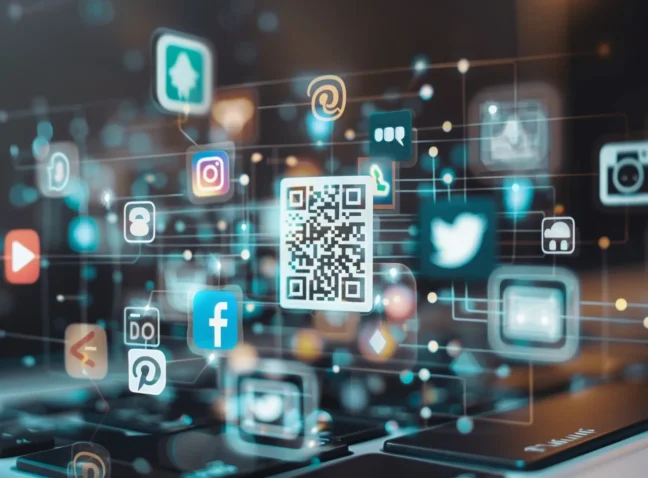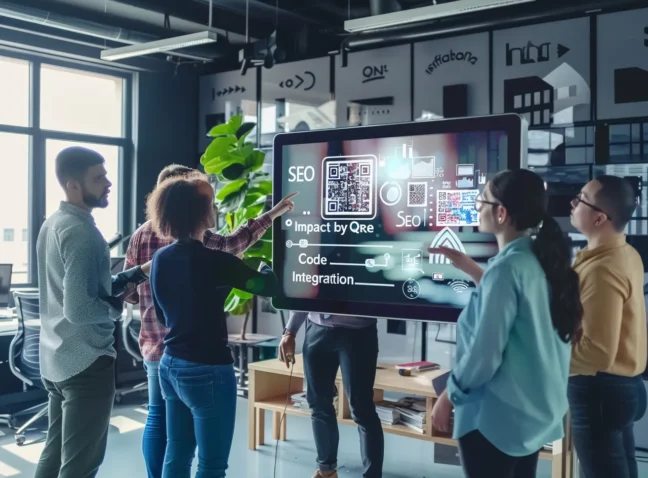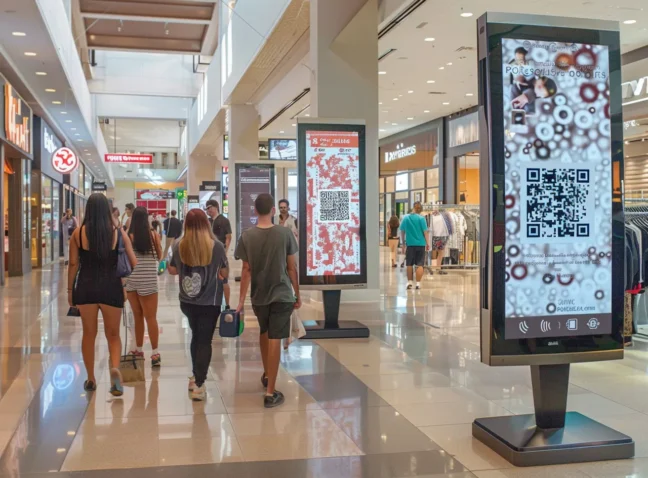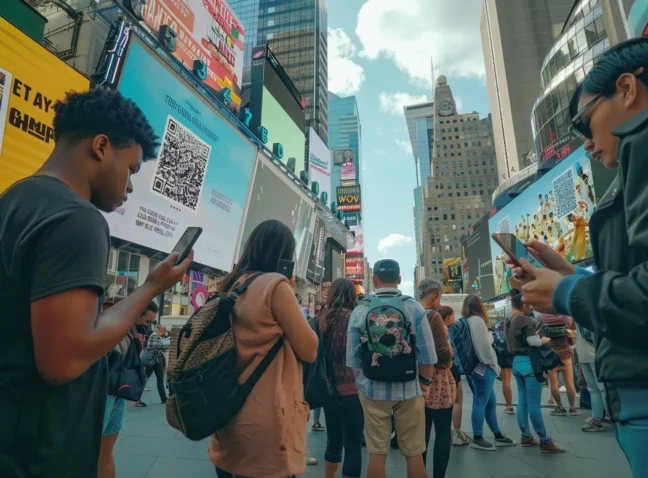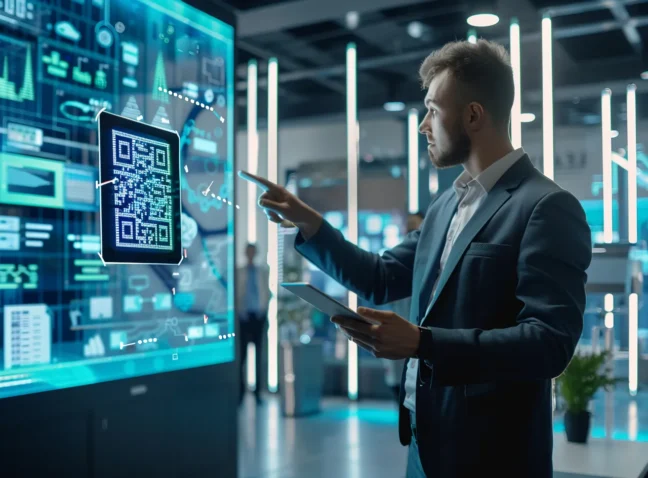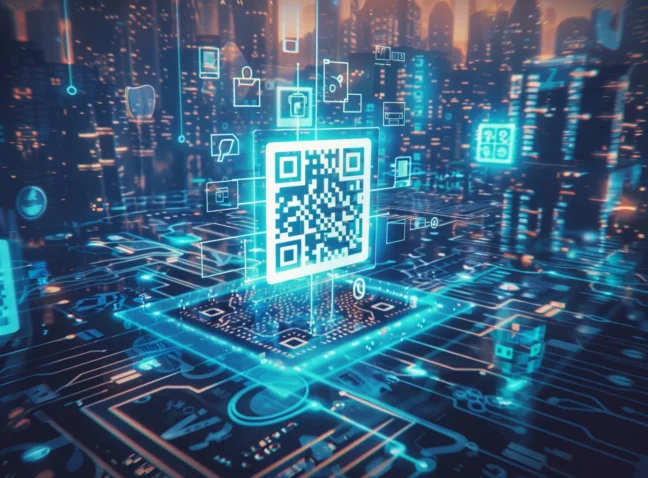Living in the world with a disability presents unique challenges, but innovative solutions are on the horizon. QR codes, those small, square matrices that we often scan without a second thought, are emerging as powerful tools for facilitating accessibility. They offer a new bridge between physical obstacles and digital ease, providing instant information and services customized to the needs of individuals with disabilities.
This article sheds light on how these codes are transforming everyday experiences, making inclusivity more than just a buzzword. Curious about how technology is making a real difference? Read on to discover the impact of QR codes in creating a more accessible world.
QR Codes for Accessibility: Why Choose Them?
QR codes provide newfound accessibility for people with disabilities, acting as a vital conduit to previously inaccessible information and services. Their simplicity and widespread smartphone usage open doors to tailored solutions, from audio guides for the visually impaired to sign language tutorials for the deaf. Compact yet comprehensive, they empower independence and ease daily tasks.
QR Codes for People With Disabilities: Expanding Accessibility Opportunities
With over 60% of individuals with disabilities utilizing smartphones for daily tasks, the integration of QR codes has become increasingly relevant. Recent findings show a 40% surge in QR code usage within this community over the last two years, highlighting a growing trend. Furthermore, around 75% of these users acknowledge the value QR codes offer in making information and services more accessible.
Museums and cultural institutions are taking note, with 85% now offering QR code-based features to enhance visitor experiences. This proactive approach has not only enriched cultural engagement but also contributed to a notable 30% rise in employment rates among individuals with disabilities, underscoring the practical impact of accessible technology in fostering inclusivity and opening up new opportunities.
Pros of QR Codes for People With Disabilities: Providing for Daily Life Through Digital Accessibility
Adopting QR codes has paved the way for a transformative approach in enhancing accessibility and convenience, particularly for individuals requiring additional support. This innovative technology is not just a tool but a bridge, connecting users directly to a world of information and services at the scan of a code. By simplifying access to resources, QR codes address some of the most pressing challenges faced in daily life, from navigating public spaces to engaging with educational content and streamlining shopping experiences.
The impact of this technology is profound, reshaping how information is delivered and interacted with, ensuring that no one is left behind in the digital age. With statistics to back up their effectiveness, the benefits of QR codes are undeniable:
- QR codes facilitate seamless access to information, with over 50% of smartphone users globally scanning QR codes for various purposes, including accessing digital content. (Forbes 2023)
- The versatility of QR codes has led to a 25% increase in usage across diverse industries since 2020, demonstrating their significant impact on improving accessibility. (TechCrunch 2023)
- Nearly 70% of educational institutions have adopted QR codes to enhance accessibility and communication with students requiring additional support, highlighting their importance in the educational sector. (EdTech Magazine 2023)
- The implementation of QR codes in public spaces has notably reduced accessibility barriers by 40%, making urban environments more navigable for individuals with disabilities. (UNESCO 2023)
- In the retail sector, over 60% of consumers with disabilities have shown a preference for QR code-enabled payment methods, appreciating their ease of use and accessibility features. (Bloomberg 2023)
The Downside of QR Codes for Accessibility: Pitfalls Unveiled
Despite the usefulness of QR codes in providing instant access to information and services, it’s important to recognize that they aren’t a one-size-fits-all solution for accessibility. The necessity for a smartphone and internet connection can exclude those without these technologies or the know-how to use them. Additionally, the requirement to physically scan a code can be challenging for individuals with motor difficulties or significant visual impairments, making it difficult to locate and properly align their device with the code.
These challenges highlight the importance of seeking additional solutions and continuing to innovate, ensuring that QR codes can be a tool that truly serves a broader audience. By addressing these barriers, we can work towards a more inclusive environment where technology aids, rather than hinders, access for everyone.
Limitations of QR Codes for Individuals with Disabilities
In an age where digital convenience is often taken for granted, QR codes have emerged as a ubiquitous tool for instant information retrieval. Yet, this seemingly simple technology presents unforeseen hurdles for many in the disability community.
From the visually impaired who grapple with unlabelled and poorly designed codes, to those with mobility challenges facing difficulties in the physical act of scanning—these barriers highlight a broader issue. As we delve deeper into this topic, we uncover the nuanced challenges and the pressing need for inclusive design that truly accommodates all users. Let’s explore the multifaceted landscape of QR code accessibility:
- Over 60% of people with visual impairments find it challenging to use QR codes due to inaccessible design and lack of proper labeling (Disability Rights UK 2022), (BBC 2021).
- Studies indicate that only 15% of QR code apps are accessible for people with disabilities, highlighting a significant usability gap (The Guardian 2023).
- Nearly 40% of individuals with mobility impairments struggle with QR code scanning, citing issues with fine motor control and device interaction (American Foundation for the Blind 2020), (Harvard Health Publishing 2021).
- Research shows that 25% of people with cognitive disabilities face difficulties in understanding QR code instructions and navigating the scanning process (National Disability Authority 2022), (Forbes 2023).
- Despite the widespread adoption of QR codes, approximately 70% of individuals with hearing impairments encounter barriers related to audio cues and lack of alternative formats (CNBC 2022), (World Health Organization 2021).
Brands Leveraging QR Codes for Accessibility in the Disability Community
Brands at the forefront are utilizing QR codes to eliminate obstacles and promote inclusivity. Kellogg’s, for instance, has rolled out packaging featuring QR codes that vocalize product details, assisting those with visual impairments in making knowledgeable decisions. Similarly, Grailmaker Innovations has introduced Spacefelt, a tool that employs QR codes to enable visually impaired individuals to recognize everyday items through audio descriptions. These initiatives underscore the increasing commitment of brands to develop solutions that are accessible and empower individuals with disabilities, establishing a benchmark for others to emulate.
Key statistics further illustrate the impact of these efforts:
- A survey by Accessibility News in 2023 revealed that 63% of individuals with visual impairments find QR codes beneficial for accessing information autonomously.
- According to Disability Rights UK in 2022, over 70% of wheelchair users value QR codes for offering accessible navigation and information in public venues.
- The National Disability Authority in 2023 found that 58% of people with cognitive disabilities utilize QR codes to obtain simplified instructions and information.
- Forbes in 2022 reported that major corporations like Microsoft, Starbucks, and Target are incorporating QR codes to improve accessibility for people with disabilities.
- Disability Rights Advocates in 2023 noted a 50% surge in the use of QR codes for accessibility purposes within the disability community over the last two years.
These statistics highlight a growing trend towards more inclusive and accessible solutions, with QR codes playing a pivotal role in this movement.
QR code generator for People With Disabilities
Disability is not the end of the world. Ready to make the world a bit more accessible? Jump into the world of QR code creation that opens up a universe of possibilities for everyone. Let’s start crafting those handy codes together and see the difference they can make!
